Global Catering Software Market - Comprehensive Data-Driven Market Analysis & Strategic Outlook
The global catering software market will transform because it starts small. Early on, catering events were very dependent on manual operations—scribbled orders, spreadsheets, and handoffs among servers, chefs, and distributors by word of mouth. The early 2000s saw the first real shake-up when software solutions started to provide fundamental inventory and order management capabilities, enabling caterers to automate and prevent discrepancies. These initial solutions, though rudimentary, form the foundation for a far more sophisticated approach to event, menu, and customer relationship management.
- Global catering software market size at about USD 1199.1 million as of 2025, expanding at approximately 13.3% CAGR during 2032, perhaps reaching USD 2874.8 million.
- Cloud-based solutions account for nearly 68.5% market share, leading innovation and expanding applications through extensive studies.
- Critical trends fueling expansion: Growing need for effective event management and catering services, More widespread use of cloud and mobile-based catering solutions
- Key opportunities are: Interoperability with data analytics and AI to develop customized menu planning and demand predictive forecasting
- Critical insight is: The market will grow in value by an exponential scale over the next decade, supporting potential growth opportunities.
- By the mid-2010s, the company was growing at a breakneck pace as a result of increasing pressure on companies to provide bespoke experiences and streamlined services.
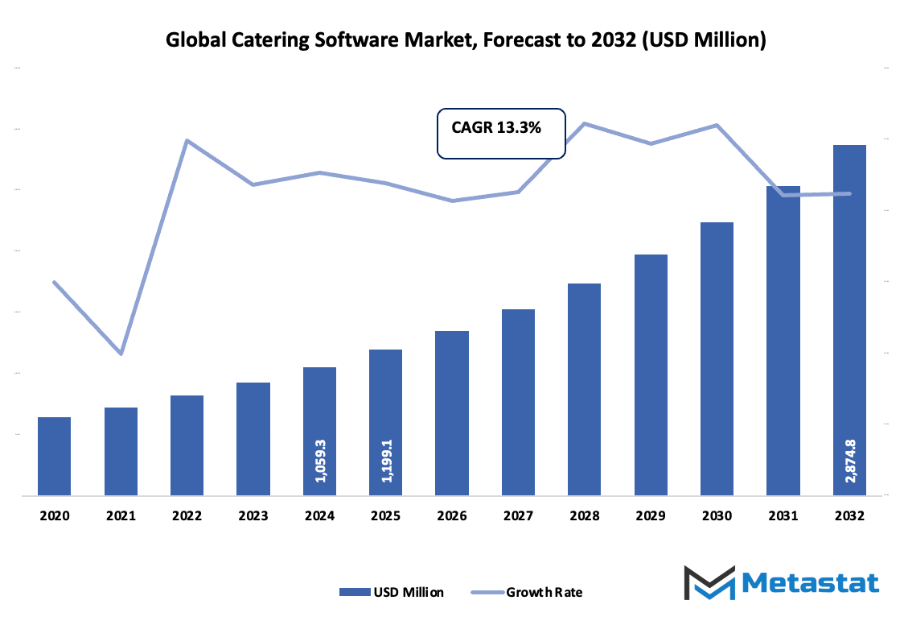
Diners began requesting greater freedom of menu choice, provision of live information, and seamless reservation procedures. Catering companies reacted by employing software that combined customers' choice, allergens, and event planning, enabling more customized provision of service. At the same time, cloud computing and mobile devices emerged and influenced software development to enable managers and workers to view schedules, orders, and stock levels anywhere. The decade will be a turning point as software evolved from an adjunct tool to a strategic enabler. Food safety, data security, and traceability regulatory provisions will remain driving forces. There will be greater incorporation of compliance elements in catering software to cover health inspection compliance, allergen management, and procedure for reporting without suffocating manual intervention. Analytics and AI will step forward for enabling forecasting, staffing, and menu planning so that companies can respond to the market trend and seasonality in a quicker manner. As the global catering software market evolves, it will become increasingly instrumental in advising caterers' planning, operation, and customer behavior. The transition from fixed digital records to networked, savvy platforms will redefine customer satisfaction and operational efficiency.
These solutions will be used by companies not only to organize work but to craft experiences that are capable of knowing what the customer needs next and enhance all aspects of service delivery. The industry will move towards integrated systems that bring together technology, imagination, and operational performance in combinations that will define the future catering business.
Market Segments
The global catering software market is mainly classified based on Deployment Type, Type, Organization Size, Application.
By Deployment Type is further segmented into:
- Cloud-based: Cloud-based catering software will bring convenience and remote access to companies, enabling employees to work remotely. Maintenance and upgrades are taken care of by the vendor and lighten in-house teams' workload. Integration with other systems is comparatively easier, which will make overall management processes easier.
- On-premise: On-premise catering software will provide better data control and security. Companies will host and administer the system on their own infrastructure, which may be more resource-intensive but provides customization based on tailored needs. This category houses data on company premises, providing additional security to sensitive information.
By Type the market is divided into:
- Marketing: Marketing software with a marketing orientation will assist companies to plan and carry out promotion campaigns. Customer segmentation, email marketing, and social media support functionalities will assist companies to interact with audiences. The software will assist in measuring marketing performance and thus speed up customer engagement and business growth.
- Order Management: The Catering order management system will take care of all the order processing stages. From receiving orders to tracking and delivery, it will make companies precise and effective. Manual tasks will be automated, saving errors and hours, so that employees can concentrate on customer experience and service quality enhancement.
- Product Management: The product management software will be used to track and manage control of products, ingredients, and stock. The software will enable one to make product changes in seconds, monitor stock levels, and simplify procurement. Proper product management will eliminate waste, save money, and provide customers with consistent quality.
- Event Organization: Event organization software will assist business organizations in organizing and coordinating event catering. Scheduling, resource planning, and client communication features will make operations easier. It will facilitate effective coordination of employees, venues, and menus and therefore ensure smooth events that are satisfying to clients.
By Organization Size the market is further divided into:
- Small and Medium Enterprises (SMEs): Catering software for SMEs will focus on cost-effectiveness and simplicity. It will provide essential tools to manage operations without requiring extensive IT resources. Scalability will allow these businesses to expand their use of software as growth occurs, supporting efficiency and improved service delivery.
- Large Enterprises: Large enterprises will benefit from catering software that supports complex operations. Features like advanced reporting, multi-location management, and integrations with other enterprise systems will allow smooth handling of large-scale processes. This software will enhance decision-making, coordination, and overall operational efficiency.
By Application the global catering software market is divided as:
- Catering Service: Catering service software will enable businesses to manage orders, events, and customer interactions effectively. Automation of key processes will save time and reduce errors. The software will allow better tracking of resources and customer preferences, ensuring high-quality service and satisfaction for clients.
- Others: Other applications of catering software will include internal business management and operational support. These may cover functions such as accounting, staff management, and reporting. By simplifying these tasks, software will help businesses focus on core activities and improve overall productivity and efficiency.
|
Forecast Period |
2025-2032 |
|
Market Size in 2025 |
$1199.1 Million |
|
Market Size by 2032 |
$2874.8 Million |
|
Growth Rate from 2025 to 2032 |
13.3% |
|
Base Year |
2024 |
|
Regions Covered |
North America, Europe, Asia-Pacific, South America, Middle East & Africa |
By Region:
- Based on geography, the global catering software market is divided into North America, Europe, Asia-Pacific, South America, and the Middle East & Africa.
- North America is further divided into the U.S., Canada, and Mexico, whereas Europe consists of the UK, Germany, France, Italy, and the Rest of Europe.
- Asia-Pacific is segmented into India, China, Japan, South Korea, and the Rest of Asia-Pacific.
- The South America region includes Brazil, Argentina, and the Rest of South America, while the Middle East & Africa is categorized into GCC Countries, Egypt, South Africa, and the Rest of the Middle East & Africa.
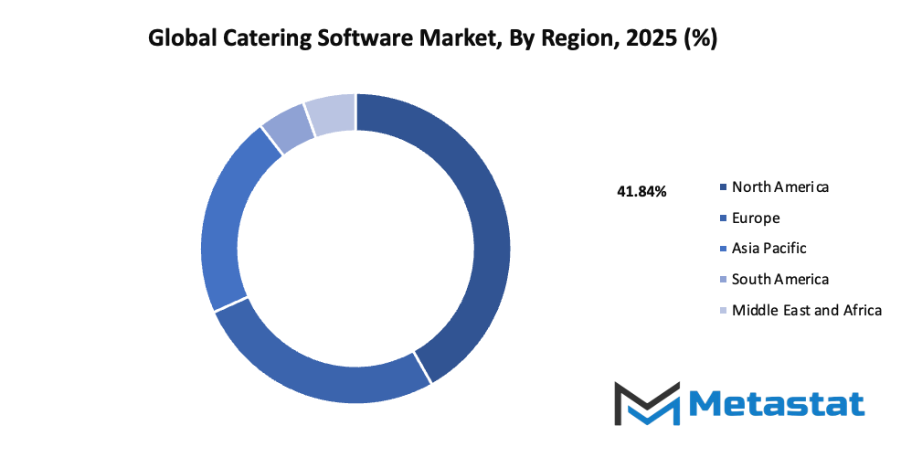
Growth Drivers
- Growing demand for efficient event management and catering services: The global catering software market will benefit from the increasing need for streamlined event management and catering services. Businesses are looking for tools that can manage multiple events, track orders, schedule staff, and improve overall service delivery, making software solutions highly valuable in daily operations.
- Increasing adoption of cloud-based and mobile catering solutions: The global catering software market will grow as more companies shift toward cloud-based and mobile solutions. These platforms offer flexibility, real-time updates, remote access, and easier collaboration, allowing catering businesses to respond faster to client demands and manage operations more effectively.
Challenges and Opportunities
- High implementation and subscription costs for small businesses: Small businesses face challenges in adopting the global catering software market due to high setup costs and recurring subscription fees. Limited budgets make it difficult for smaller companies to access advanced software, creating a barrier to entry and slowing overall adoption despite clear operational benefits.
- Resistance to adopting digital solutions among traditional caterers: Traditional catering providers often resist using digital tools, slowing the growth of the global catering software market. Many prefer manual methods for menu planning, order tracking, and customer management, which limits the speed of technological adoption and the potential advantages of automated systems.
Opportunities
- Integration with AI and data analytics for personalized menu planning and predictive demand forecasting: The global catering software market will see opportunities in combining AI and data analytics. These technologies can provide personalized menu suggestions, forecast demand more accurately, optimize inventory, and enhance customer satisfaction, giving catering businesses a competitive edge while improving efficiency and reducing waste.
Competitive Landscape & Strategic Insights
The competitive landscape in the global catering software market is expected to become increasingly dynamic, driven by the presence of both well-established international leaders and agile regional players. Companies such as Caterease, CaterXpert, Gather, Tripleseat, Curate, Flex Catering, Total Party Planner, CaterTrax, PeachWorks, CaterEdge, Better Cater, FoodStorm, Spoonfed, EventPro, CaterSoft, Priava, CaterPro for Sage, and Function Tracker for Caterers have shaped the industry through innovative solutions, focusing on efficiency, automation, and customer engagement. As technology advances, the market will experience a transformation where software platforms are no longer just tools for scheduling or billing but central hubs for decision-making, real-time insights, and strategic growth.
Strategic insights suggest that the next phase of the catering software industry will prioritize integration with artificial intelligence and predictive analytics, enabling businesses to anticipate client needs, optimize resources, and personalize offerings at an unprecedented level. Companies that invest in scalable, cloud-based solutions will have a clear advantage, as these platforms allow catering businesses to manage operations across multiple locations seamlessly. Additionally, enhanced data security and compliance features will become essential, as clients increasingly demand transparency and protection of sensitive information.
From a futuristic standpoint, collaboration features and mobile accessibility will redefine how catering teams interact with clients and internal staff. Software platforms will facilitate remote coordination, virtual tastings, and instant feedback, which will accelerate decision-making and reduce operational bottlenecks. Regional competitors will play a critical role in pushing innovation, as they often adapt quickly to localized client demands and niche market requirements. Meanwhile, established global leaders will leverage their scale and resources to integrate emerging technologies, offering comprehensive solutions that appeal to both small enterprises and multinational catering operations.
Market size is forecast to rise from USD 1199.1 million in 2025 to over USD 2874.8 million by 2032. Catering Software will maintain dominance but face growing competition from emerging formats.
In summary, the competitive landscape and strategic insights indicate that the global catering software market will become a hub of technological innovation, efficiency, and client-centered growth. Businesses that anticipate these trends and adapt their strategies accordingly will remain ahead, while software providers that combine automation, predictive intelligence, and seamless collaboration will set the standard for the industry’s future.
Report Coverage
This research report categorizes the global catering software market based on various segments and regions, forecasts revenue growth, and analyzes trends in each submarket. The report analyses the key growth drivers, opportunities, and challenges influencing the global catering software market. Recent market developments and competitive strategies such as expansion, type launch, development, partnership, merger, and acquisition have been included to draw the competitive landscape in the market. The report strategically identifies and profiles the key market players and analyses their core competencies in each sub-segment of the global catering software market.
Catering Software Market Key Segments:
By Deployment Type
- Cloud-based
- On-premise
By Type
- Marketing
- Order Management
- Product Management
- Event Planning
By Organization Size
- Small and Medium Enterprises (SMEs)
- Large Enterprises
By Application
- Catering Service
- Others
Key Global Catering Software Industry Players
- Caterease
- CaterXpert
- Gather
- Tripleseat
- Curate
- Flex Catering
- Total Party Planner
- CaterTrax
- PeachWorksCaterEdge
- Better Cater
- FoodStorm
- Spoonfed
- EventPro
- CaterSoft
- Priava
- CaterPro for Sage
- Function Tracker for Caterers
WHAT REPORT PROVIDES
- Full in-depth analysis of the parent Industry
- Important changes in market and its dynamics
- Segmentation details of the market
- Former, on-going, and projected market analysis in terms of volume and value
- Assessment of niche industry developments
- Market share analysis
- Key strategies of major players
- Emerging segments and regional growth potential



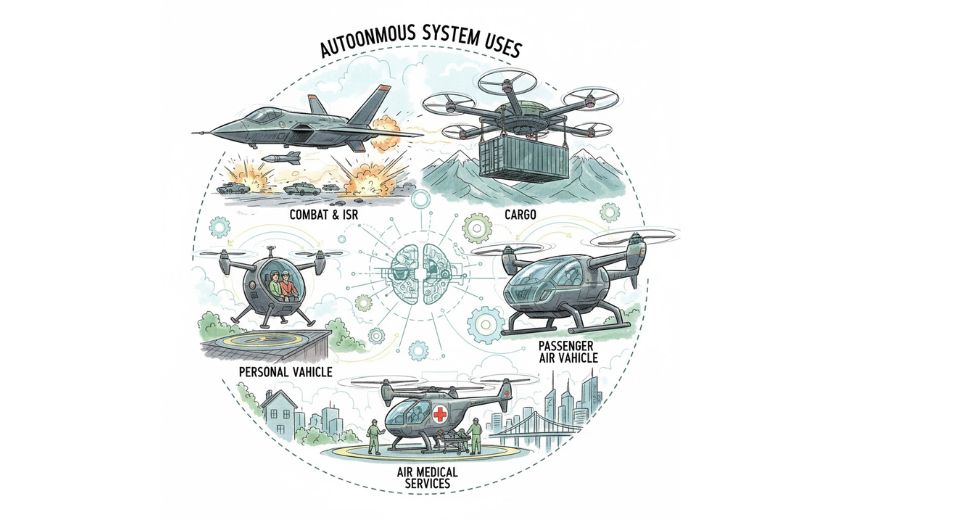
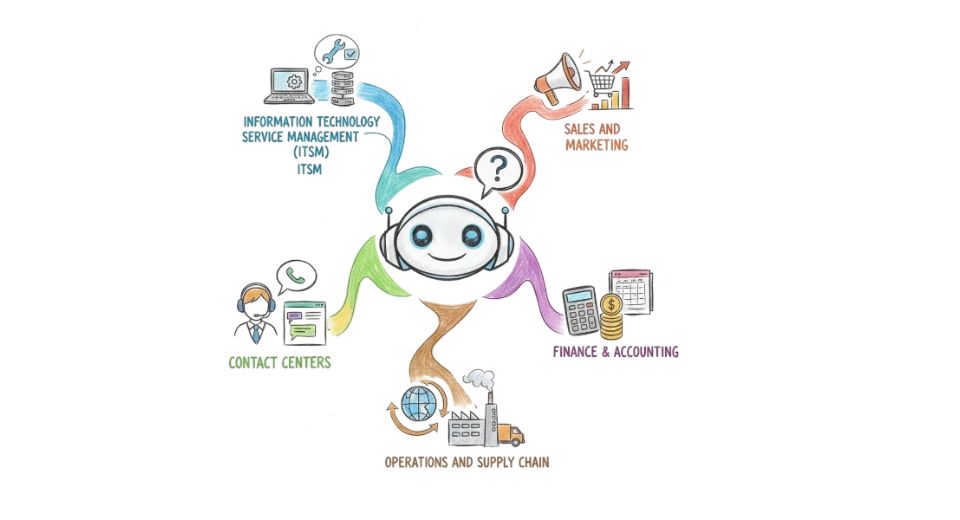
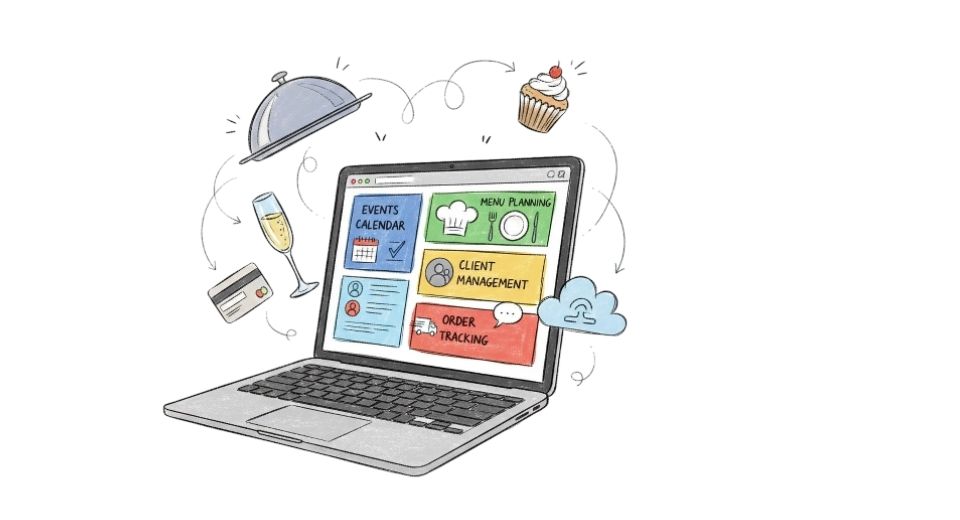
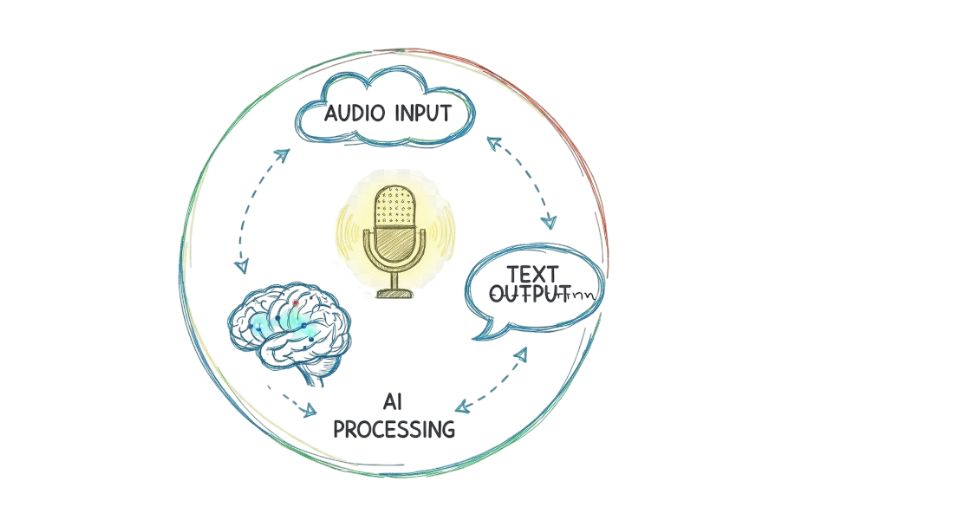

 US: +1 3023308252
US: +1 3023308252






